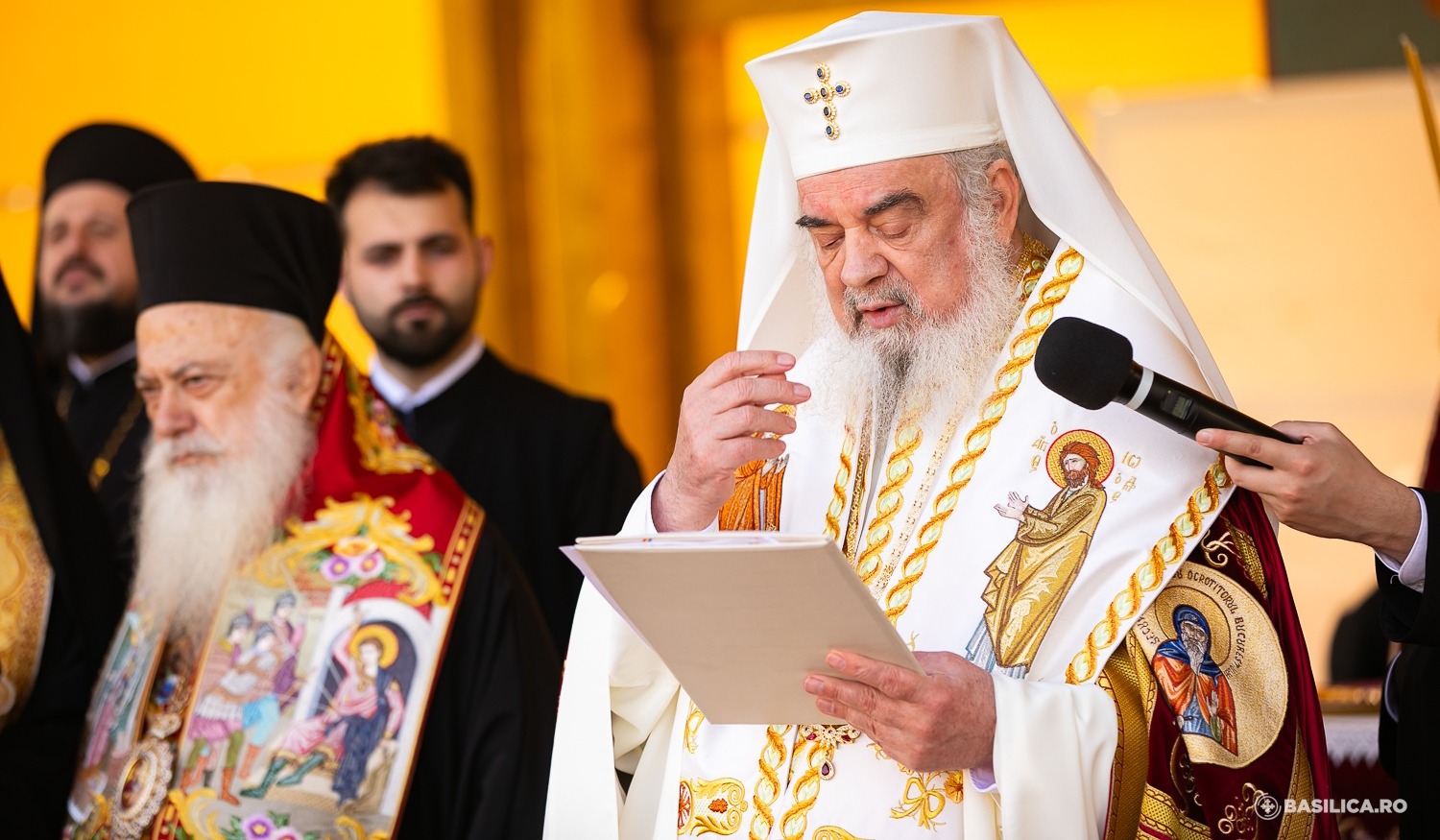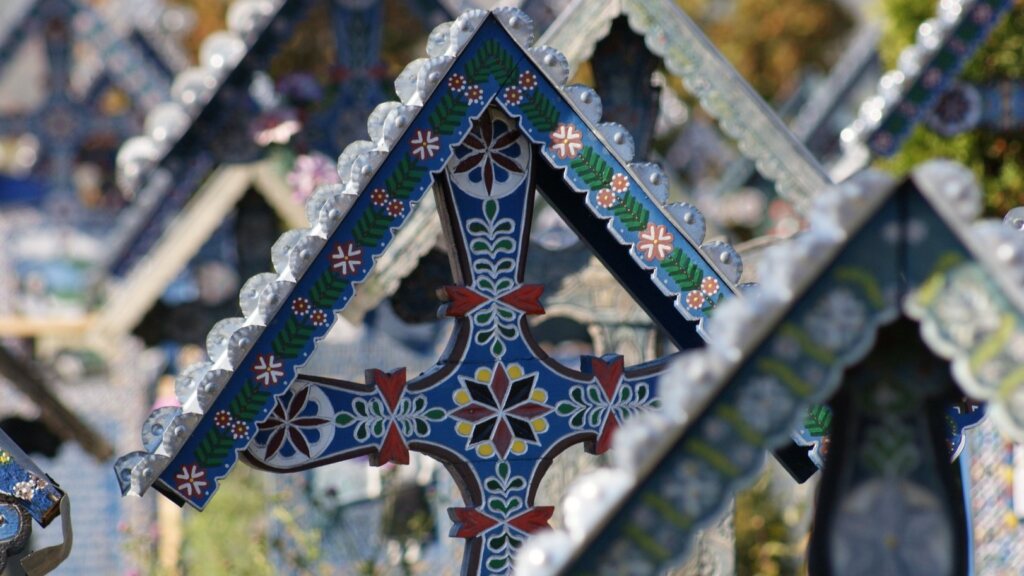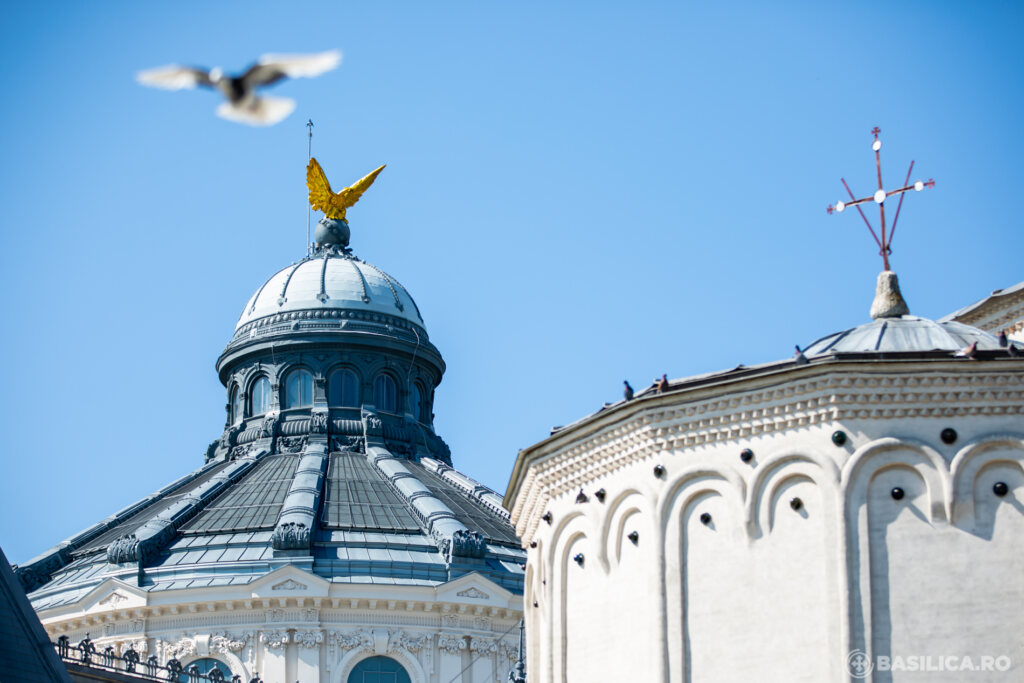At the reception ceremony of the holy relic of Saint Demetrius the Myrrh-Gusher and the wonderworking icon of Panagia Soumela, His Beatitude Patriarch Daniel addressed the pilgrims, noting that the Theotokos and both Saints Demetrius are unquenchable torches who illuminate the lives of believers.
Patriarch Daniel’s message to pilgrims at celebrations of Saint Demetrius the New: full text
Dear pilgrims,
The year 2023, proclaimed as the Solemn Year of the Pastoral Care of the Elderly and the Commemorative Year of Hymnographers and Church Chanters, is a blessed time in which we show our appreciation and respect to people who have reached the end of their pilgrimage in this world, heading for the Kingdom of God.
Old age must be understood as the age at which we approach the end of our earthly journey when the Lord Jesus Christ leads us to the house of the heavenly Father (John 14: 2). In this sense, Saint John Chrysostom says: “The weakness of the body does not in any way harm the strength of faith. An adornment of the Church is the hunchbacked gray hair united with the winged faith. The Church particularly rejoices in it.” (PG: L, 737)
Likewise, the pilgrimage of Christians to cathedrals, monasteries or various churches that house holy relics is closely related to spoken or chanted prayer. The church hymns depict the unceasing glorification of God in Heaven by the angels, but also the harmony, beauty and joy of Heaven; the Byzantine melos is, through its divine inspiration, a foretaste of the Heavenly Kingdom: “Standing in the Temple of Thy Glory, We Think Ourselves to Stand in Heaven.”
Saint Demetrius the New, the Protector of Bucharest, whose patronal feast we celebrate these days, but also Saint Demetrius the Great Martyr, the Myrrh-Gusher, whose relics were brought for worship and blessing from the Metropolis of Veria, Naousa and Kampania (Greece), together with the icon of the Mother of God from the Monastery of Soumela, near the city of Veria, unite us in an ever deeper communion, young and old, children and grandparents, to direct us all to the Kingdom of God.
Right-believing Christian,
Most of the hagiographers who wrote the life of the Holy Great Martyr Demetrius remember that he was the son of the ruler of the city of Thessalonica, baptized in secret by his parents, who feared the cruel persecutions against Christians.
Thus, we can read in the Synaxarion of October 26 and the Prologue that Saint Demetrius learned from his parents, in the hidden chamber of their palace, all the mysteries of the holy faith, developing his knowledge of our Lord Jesus Christ, as well as charity towards of the poor.
Thus, with God’s grace, the Holy Great Martyr Demetrius showed himself to be a good and merciful man from his youth.
Highlighting the spiritual growth of the young Demetrius, Saint Gregory Palamas wrote: “Following some (of the saints), others equaling, and others still standing before them, some he surpassed, and not by a little, alone or with very few, perfecting himself in all things and alone reuniting in himself the virtues of all, so that the Word, who was in the beginning by God, may inspire him and bring forth fruit through good words for the benefit of all and, at the same time, to direct all.”
How beloved the Great Martyr Demetrius is can also be seen in patristic literature, in which we find a series of sermons on the feast of this saint of the Orthodox Church. Thus, Saint Photius the Great, Saint Nicholas Kabasilas, Saint Symeon the Metaphrast, Saint Gregory Palamas, Saint Symeon of Thessalonica, Constantine Harmenopoulos, Nicephorus Gregoras and other church writers described the saintliness of his life and the miracles he performed.
Today, through the kindness of His Eminence Metropolitan Panteleimon of Veria, Naousa and Kampania, whom we thank for his friendship and generosity, we can also venerate the wonderworking icon of the Mother of God from Soumela Monastery in Greece.
According to tradition, this icon was painted by the Holy Apostle and Evangelist Luke. The face of the Mother of God in this icon is the closest to the real one because it is one of the three icons painted by the Holy Apostle and Evangelist Luke at the request of the Holy Virgin Mary.
Not long ago, it was discovered that, in the 17th century, Lady Maria, the wife of Prince Şerban Cantacuzino, the ruler of Wallachia, added to this icon from Trebizond a gilded silver crown adorned with precious stones, thus asking for the help of the Mother of God for her whole family.
Beloved faithful,
All the saints of God call us to work together with God’s grace, through prayer and repentance, through humility and merciful love, to achieve the sanctification of our lives and the likeness of the holy and merciful God.
Following the lives of the saints helps us seek the sanctification and deification of the human being, as the Holy Apostle Paul writes in his epistle to the Hebrews: “Make every effort to live in peace with everyone and to be holy; without holiness, no one will see the Lord” (Hebrews 12: 14).
We entreat the Mother of God, Saint Demetrius the New, Protector of Bucharest, the Great Martyr Demetrius the Myrrh-Gusher, the Holy Emperors Constantine and Helen and Saint Nectarius of Aegina to set forth their prayers before God for the health and help of the pilgrims, who honour saints with deep devotion and holy joy.
At the same time, we pray that God will shower His mercy on all the people who are in war, suffering and in trouble today.
Dear pilgrims,
In conclusion, we pray to God to bless you all with health and happiness, peace and joy, help in your family and activity, with many blessed years, to increase in faith and Christian love, in holiness and good works, unto the glory of the Most Holy Trinity, the joy of the saints and for the attainment of salvation!
Amen.
† Daniel
Patriarch of the Romanian Orthodox Church
Note:
[1] Sf. Ioan Gură de Aur, Predici la sărbători împărăteşti şi cuvântări de laudă la sfinţi, trad. din lb. greacă şi note de Pr. prof. Dumitru Fecioru, Bucureşti, Ed. Institutului Biblic și de Misiune al Bisericii Ortodoxe Române, 2002, p. 559.
[2] „Slujba Utreniei”, perioada Postului Mare, în: Ceaslov, București, Ed. Institutului Biblic și de Misiune Ortodoxă, 2014, p. 88.
[3] Sf. Grigorie Palama, „Omilia 49: la cel între sfinți Mare Mucenic Dimitrie și Mare făcător de minuni și Izvorâtor de mir”, 1, în: Omilii, vol. 3, trad. de Parascheva Grigoriu, București, Ed. Anastasia, 2012, p. 159.
Foto credit: Basilica.ro / Mircea Florescu
Urmăriți-ne pe Twitter: @AgentiaBasilica






